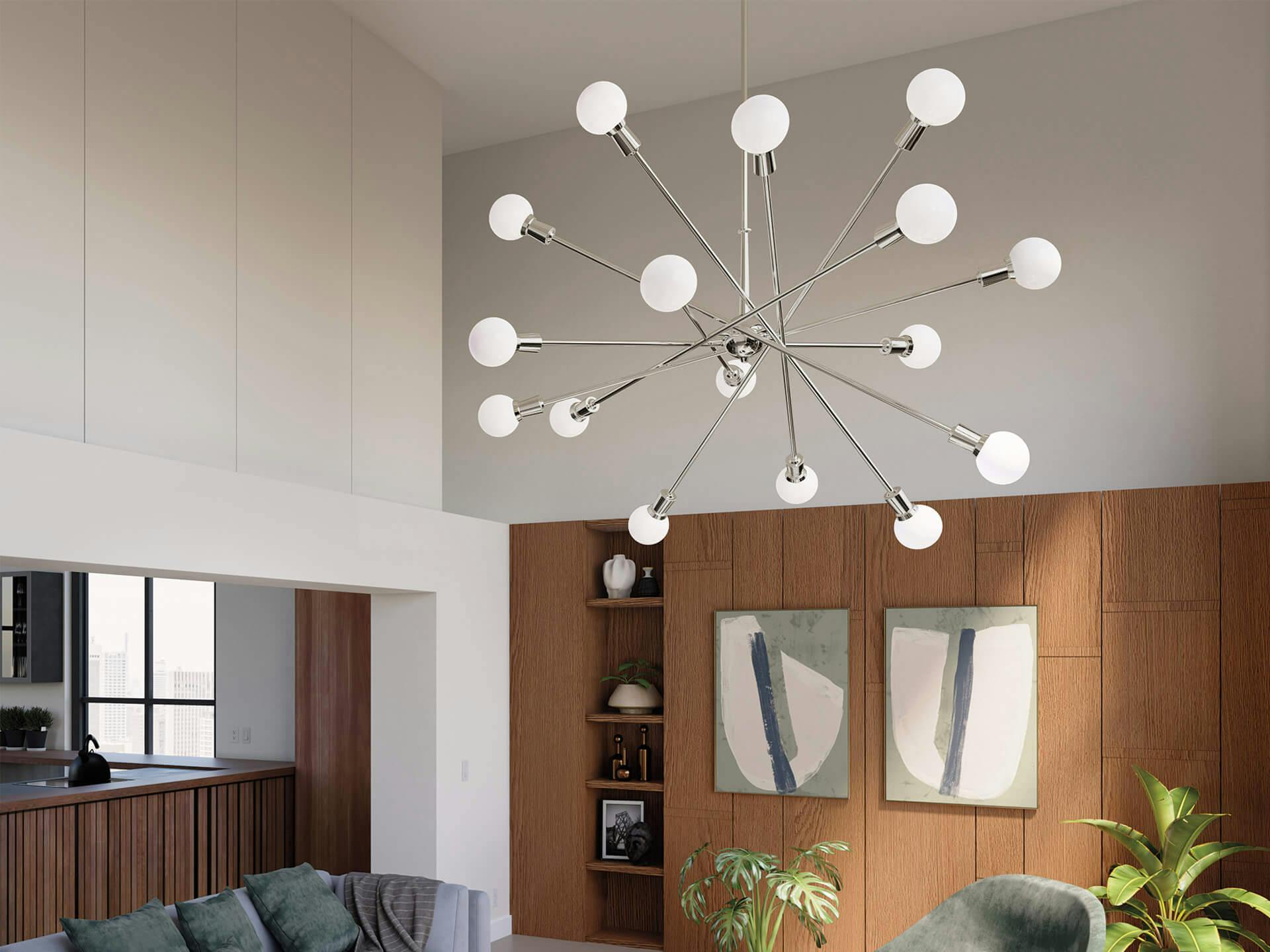
Indoor Lighting Guide
Here we shed light on some tips and tricks that will help with selection, final installation and everything in between.
Chandelier Planning and Selecting Tips
Chandeliers adorn your space like jewelry for your room. They sparkle, they accent, and they’re designed to be seen. From round to rectangular, there are so many shapes and sizes. But how do you know the right one for your space? We have a few key tips to help.
There are some key things to consider when buying a chandelier; shape, hanging height, and light quality. But first, you need to know your room dimensions to get an idea for the approximate size of your fixture.



Size
Don’t worry, the formula is simple. Just add up the dimensions (in feet) of a room to arrive at the minimum diameter (in inches) for your chandelier. For example, if the dining room is 12’ x 14’, add 12 and 14 to equal 26. A 26” diameter should be the minimum size used in the room for maximum impact. If you are considering a linear chandelier, the length should be between 1/3 and 1/2 the length of the table. Now that you know the size, it’s time to figure out what shape is right for your space.
Shape
Most chandeliers are either round, square or rectangular. Round and square chandeliers are classic looks that have been used to adorn rooms since the days of candelabras. One thing to think through is the ceiling height when using a round or square chandelier. With taller ceilings, seek out shapes that are elongated to fill more of the vertical space in the room. And there’s another type of chandelier that’s gaining in popularity; oval. Oval chandeliers are typically wider in the middle when compared with linear models, so ovals will look better in rooms with taller ceilings.
Hanging Height
If you’re putting a chandelier over a table or breakfast nook, make sure the bottom of the round or square chandelier is 30” from the top of the surface. For wider tables, or taller ceilings, it might help to increase that height about 3” to 6”. Due to their larger central mass, rectangular chandeliers can be hung higher to shine their brightest.
If you’re not hanging over a table, but rather in a foyer or great room, the bottom of the chandelier should be a minimum of 7' from the floor. In two-story foyers, many people prefer to center the chandelier in a window if one is available. In a tall ceiling, 1 story foyers, or 1.5 story foyers, remember that a chandelier can be hung with no chain or stem, just be sure the 7’ minimum from the floor is met so guests can walk under the chandelier rather than through it.
Light Quantity
Like selecting the size of a chandelier, there is information to guide you in the amount of illumination needed in a room. With the dominance of LED as a light source, we now measure light in lumens. The Illuminating Engineering Society (IES) has recommendations for each room in a home, based on desired brightness levels. For a dining room, the IES suggests between 10 and 20 foot-candles of measured light. The formula uses that number multiplied by room area. In our example, a 12 x 15 room = 180 x 10 foot-candles = 1800, or for more illumination 180 x 20 = 3600. That means the dining room should have a chandelier that provides between 1800 and 3600 lumens. Check out our bulb and LED guide for more info on light quality and color temperature.
Now that you know how to add sparks of beauty in all the right ways, you can let your chandelier shine and light your home while enhancing the look of your space.
Having trouble finding a match on your own?
There are trained lighting professionals at independent lighting showrooms across the USA and Canada. Take advantage of their expertise.